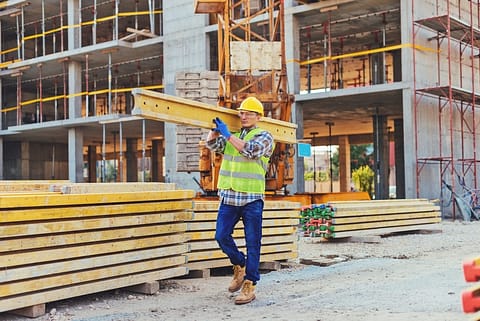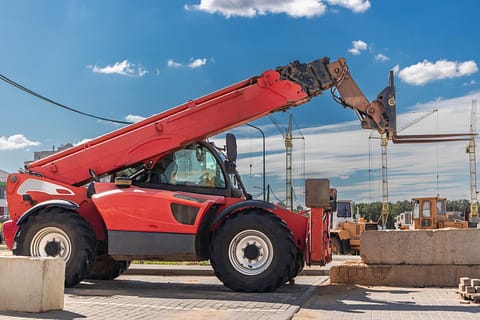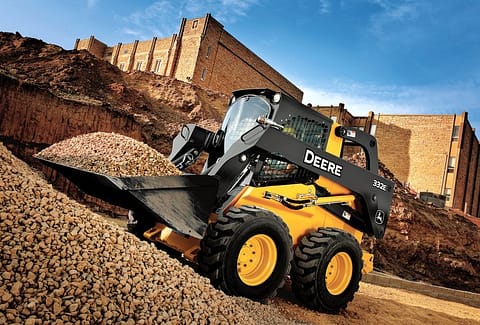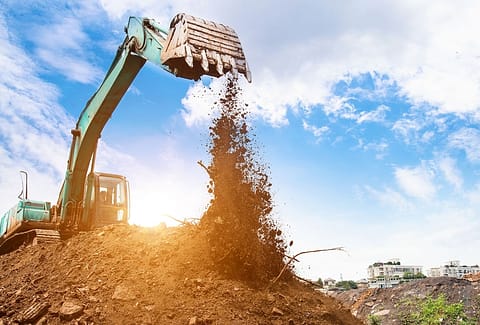Everything You Need to Know about Telescopic Handler
August 5, 2022 2022-08-05 7:33Everything You Need to Know about Telescopic Handler
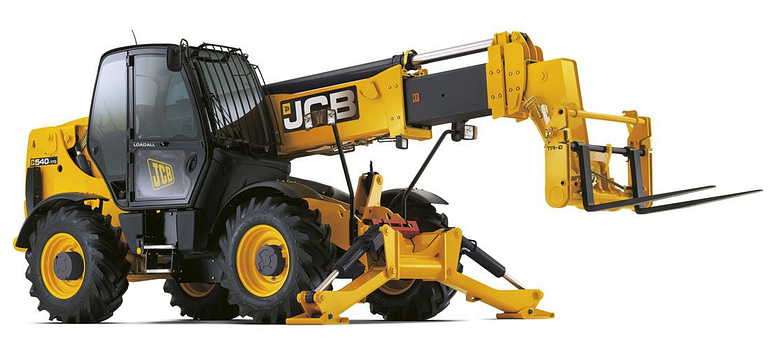
Everything You Need to Know about Telescopic Handler
BRIEF: TELESCOPIC HANDLER
A telehandler or telescopic handler is a flexible water hydraulic lifting unit utilized in agriculture and construction. The name came from its telescopic cylinder, more ordinarily known as a boom, which can be stretched forward to oblige different attachments.
A telescopic boom can reach forward and upwards from the vehicle, making it highly flexible. At the finish of the boom, the administrator can attach the attachments. Attachments are generally mounted on a chassis of a four-wheel drive. They are equipped with an adjustable boom that can give lift levels to 50 feet or more.
WHAT DO TELESCOPIC HANDLER DO:
Telescopic handler are valuable in many conditions yet are most frequently utilized in the Construction industry and agricultural practices. While telescopic handler can be utilized both inside and outside, they are enormous machines, except if the indoor region is extremely extensive, they are the most ideal for working outside.
Principally, telescopic handler lift and move massive or weighty burdens starting with one location and then onto the next. On the off chance that the loads are just being moved a brief distance, the telescopic handler can finish the work with extension and retraction of the telescopic arm without expecting to move its base. A telehandler, along with a wide range of lifting attachments to lift and move varied heavy loads, and telescopic handlers can assist with performing jobs effectively like lifting and moving material, moving heaps of earth, worksite cleansing, lifting labourers to a certain height and removal of snow. The snow is quickly ploughed in parking patterns because the telescopic handler sits extremely low to the ground.
ATTACHMENTS USED WITH TELESCOPIC HANDLER:
The telescopic handler is effectively and efficiently put into use along with various attachments according to the demand of the work. The various attachments include:
- Fork carriage
- Crane jib
- Bucket
- Lifting hook
Forks are the widely recognized attachment for a telescopic handler as the boom helps in the simple lifting of materials and cargo to a certain height. Forklift carriages permit the telescopic handler to lift a wide assortment of burdens, including pallets and timber. Compact or average-size telescopic handler can be used inside to move and ship things in stockrooms or assemble plants. The platform attachment can make it easier for workers in the warehouse to work at levels on the off chance that a boom or aerial scissor lift isn’t a choice. Crane jibs change the telescopic handler into an adjusted crane to lift loads where regular forklift tynes are not suited, for example, lifting loose structure materials in a bucket and afterwards lifting with the crane jib. Scoop and bucket attachments can be attached to empower telescopic handlers to lift the materials like sand, empowering the unit to stack goods into the bucket attachment before lifting.
CHOOSING A RIGHT TELESCOPIC HANDLER FOR THE JOB:
Telescopic handler come in various shapes and sizes, so the lifting capabilities vary accordingly. The size of a telescopic Handler ranges from 4m up to 46m. Of course, the big-sized machine has the capability of lifting more. Modern telescopic handlers are equipped with sensors that help operators to manage the loads easily. Super Compact, Compact, Standard lift, Heavy load, and high lift are various types of telescopic handlers.
Before buying or hiring a telescopic handler, it’s essential to contemplate what work you will need it for and look at the determinations of a model to ensure that you select a telescopic handler that will meet your necessities effortlessly. Typically, the bigger the telehandler, the heavier the loads it will lift. Overall, a standard telescopic handler will lift 4,400 lbs to 12,000 lbs. However, if you need more power, the heavy load telescopic handler lifts the weight to 16,000 lbs.
The telescopic handler’s lift limit will be mentioned in the client manual; however, it’s vital to note that most models can not securely lift their maximum lift ability. While picking the right telehandler for the gig, select a machine that can lift more weight than you expect. The compact telescopic handler have a range of around 4 meters, and high lift telescopic handlers can reach up to 20 meters in height.
SAFETY HAZARDS RELATED TO TELESCOPIC HANDLER:
With considerable equipment activity, the utilization of a telescopic handler requires proper training. In addition, various reasons like bad weather conditions, wet or muddy areas or high wind speeds can lead to the security risks of working with a telescopic handler. Therefore, follow safeguards and precautions mentioned in the training and manuals of the machine to ensure safety at work.
NECESSITY OF TELESCOPIC HANDLER TRAINING:
The conditions of operating a Telescopic Handler require proper training to ensure the safety of the workers. The situations mentioned above need a trained operator for a safe operation. Hazard awareness, awareness of safety code, lift truck stability, operation of hydraulic controls, and handling slopes and ramps are part of the crucial training that a candidate has to go through in the telehandler course.

